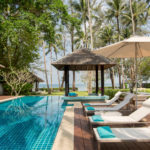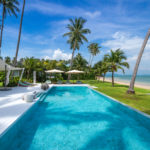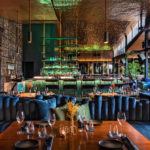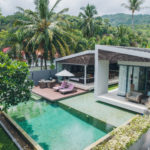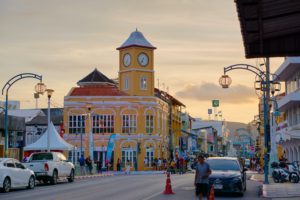
The image of Phuket may now be associated closely with immaculate beaches and azure waters that decorate its shores and draw millions of visitors a year, but in one of the most visited locations in the world lies Phuket Town, a charming town that blends interesting architecture holding stories of the generations who’ve lived in its quarters, hearty local meals and vibrant local culture. Delving into the heart of Phuket Town uncovers a captivating narrative of cultural fusion and artistic expression, leaving the deepest impression on travellers venturing into its winding lanes.
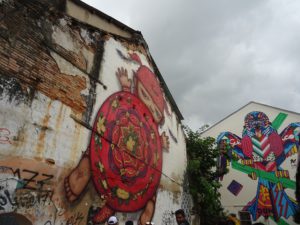
The aesthetics and architecture of Phuket Town
The Sino-Portuguese influence on the quaint buildings that adorn Phuket Town is unmistakable: many shophouses line the town’s winding streets and are adorned with decorative tiles, arched windows and wooden doors carved to perfection. These styles are reminiscent of Chinese and Portuguese building design in eye-catching fashion – a couple of standouts include the Phra Pitak Chinpracha Mansion, a mansion built by Phra Pitak Chinpracha who amassed his fortune through tin mining and is now used by the cooking school Blue Elephant, and Museum Phuket, formerly housing Phuket’s first foreign bank that opened in 1907 but is now dedicated to exhibiting Peranakan culture.
Phuket also gained increasing popularity as a street art destination – it started out with an initiative called the F.A.T. (Food Art Old Town) Project, where a group of Phuket locals wanted to showcase food-related street art throughout the old town and invited both local and international artists to contribute their work resulting in murals illustrating Phuket’s unique food culture. Today, there are many intricately designed murals plastered across numerous buildings in Phuket Town, such as one that commemorates His Majesty King Bhumibol Adulyadej (Rama IX), and another of a girl portrayed as a red tortoise, representing ang ku, a red-coloured snack made with glutinous rice flour and mung bean paste.
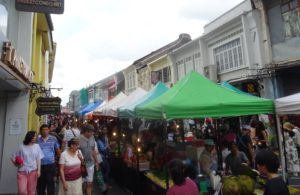
Feel the buzz of Phuket Town
As the main central street of Phuket Town, the narrow but quaint boulevard that is Thalang Road is peppered with boutique accommodation, myriad restaurants and numerous gift shops, housed in the familiar Sino-Portuguese shophouses lining both sides of the street. Turn into one of the many side roads along Thalang and you’ll find Soi Romanee, a 125-metre-long side street with colourful buildings that radiate the area and come alive mainly after 6 pm. This street finds popularity with many young couples dressed to the nines for their pre-wedding photoshoot and also hosts a live jazz show every month from November to April each year.
For travellers sticking around on the weekend, Thalang Road plays home to Lard Yai Market, a bustling night market experience that takes place every Sunday from 4 pm – 9 pm. This night market differs from other market experiences in Phuket – one can expect local crafts stalls, a delicious assortment of local cuisine, and even street performances that are sure to liven up your Sunday evening.
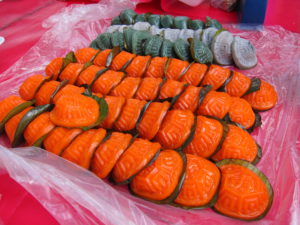
Enjoy the culinary delights of Phuket Town
Phuket’s culinary eclecticism has made it the first city in Asia to be a UNESCO Creative City of Gastronomy in 2015, and rightfully so – from savoury dishes such as kung pad sataw (stir-fried shrimps with stink beans/petai) to sweet treats like ah pong (crispy crepes made with coconut milk), travellers are spoilt for choice. Those looking for unique dining experiences are in for a treat – immerse yourself in the soul of Thai cooking through a cooking class at Blue Elephant Restaurant, or head to Raya House for authentic, unpretentious Thai cuisine – scrumptious dishes such as kaeng poo kanom jeen (creamy crab meat curry with rice noodles) have kept their regular clientele coming back over the years.
Where to stay
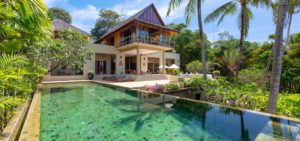
For those seeking a decadent home-away-from-home experience, Villa Praison is set against the vast horizon of Phuket’s Northwest Coast on a clifftop and offers a true escape for families and groups. The upper floors lead to a grand living room consisting of high ceilings, sliding-glass walls and a wraparound balcony, and even a large master bedroom with a walk-in wardrobe and luxurious bathroom. A descent down a spiral staircase invites you into an oasis of relaxation that is a shaded living sala with large daybeds, outdoor dining and an infinity pool that seemingly blends into its nearby trees. Complete with a game room that beckons with lounges and a pool table, Villa Praison is the height of luxury accommodation for your time in Phuket.

